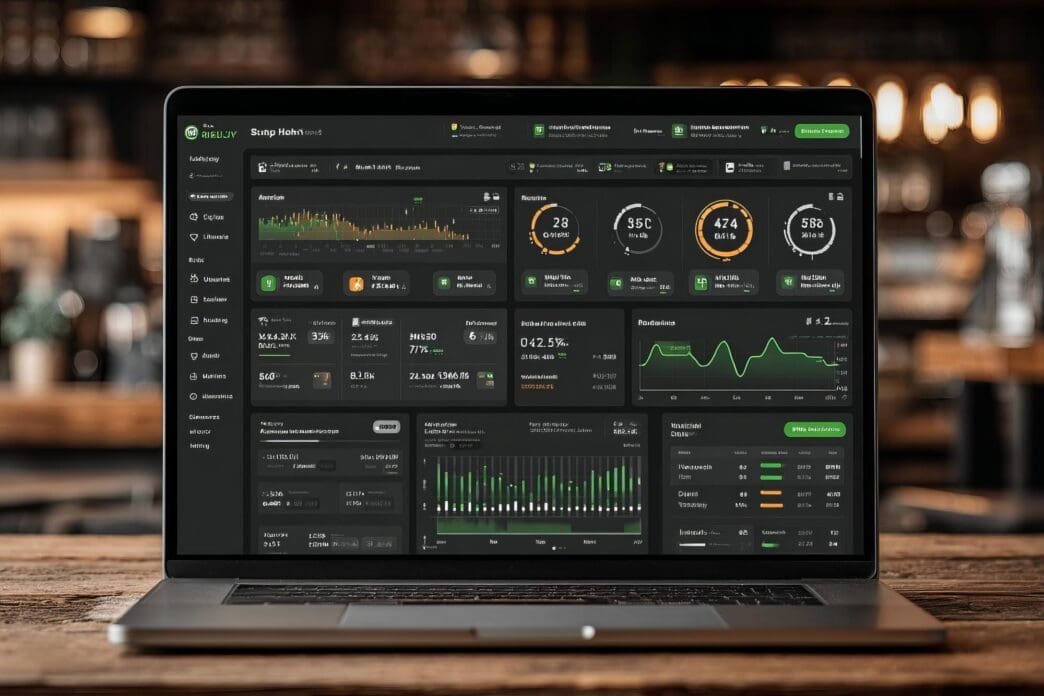Executive Summary
The Story So Far
Why This Matters
Who Thinks What?
Many business leaders struggle to leverage the full potential of their data, often because the dashboards intended to provide insight are complex, irrelevant, or simply unused. Building effective dashboards requires a strategic approach that prioritizes the user’s needs, transforming raw data into clear, actionable intelligence that drives informed decision-making and fosters a truly data-driven culture within an organization. This article will explore the critical principles and practical steps necessary to design and implement dashboards that business leaders not only use but rely upon for strategic guidance and operational excellence.
The Dashboard Dilemma: Why Many Fail
The proliferation of data and analytical tools has led to an abundance of dashboards, yet many fail to deliver genuine value. A common pitfall is a lack of clear objectives, resulting in dashboards that present a jumble of metrics without a guiding narrative. Information overload is another frequent issue, where too much data clutters the interface, making it difficult for leaders to quickly discern what is important.
Poor visualization choices can obscure insights rather than highlight them, turning data into an unreadable mess. Furthermore, many dashboards lack critical context or actionability, failing to explain the “why” behind the numbers or suggest potential next steps. When dashboards are static, unengaging, or difficult to navigate, they quickly become neglected, representing a significant investment with little return.
Foundational Principles for Effective Dashboards
To overcome these challenges, effective dashboard design must adhere to several core principles that center on the user and the desired outcome. These principles ensure that dashboards serve as powerful tools for strategic insight rather than mere data repositories.
Audience-Centric Design
Understanding the dashboard user is paramount. Designers must collaborate with business leaders to identify their specific roles, primary goals, and the key questions they need answers to. Tailoring content to specific leadership levels, whether executive, departmental, or operational, ensures that the information presented is directly relevant and impactful to their responsibilities.
Clarity and Simplicity
Effective dashboards prioritize clarity above all else. This means focusing on a limited set of key performance indicators (KPIs) that are most critical to the business objectives. Designers should avoid jargon and overly technical metrics, instead using intuitive language and visualizations that are easily understood at a glance. Simplicity ensures that leaders can quickly grasp the core message without extensive interpretation.
Actionability
A dashboard’s ultimate purpose is to drive action. It should not merely display data but highlight significant trends, flag anomalies, and reveal opportunities for improvement or intervention. Incorporating features that enable drill-downs into underlying details or direct links to related reports empowers leaders to investigate further and make data-backed decisions swiftly.
Relevance and Timeliness
For a dashboard to be valuable, its data must be current and reflect the most up-to-date business operations. Stale data quickly renders a dashboard obsolete. Regular review and updating of metrics and data sources are essential to maintain relevance, ensuring that leaders are always working with the freshest insights.
Building the Blueprint: A Step-by-Step Approach
The creation of an impactful dashboard is an iterative process that involves careful planning, execution, and refinement. Following a structured approach helps ensure that the final product meets the needs of its users.
Define Objectives and KPIs
The first critical step involves close collaboration with business leaders to identify their most pressing strategic and operational questions. These questions must then be translated into measurable key performance indicators that will form the core of the dashboard’s content. A clear understanding of what success looks like is fundamental.
Source and Prepare Data
Once KPIs are defined, identifying reliable and accurate data sources is crucial. This often involves integrating data from various systems, ensuring data quality, consistency, and proper aggregation. Many organizations leverage data warehousing or data lake solutions to centralize and prepare data for analytical consumption, creating a single source of truth.
Choose the Right Visualization
Selecting appropriate chart types is vital for effective data communication. Line charts are excellent for showing trends over time, bar charts for comparing categories, and gauge charts for indicating progress towards a target. The goal is to choose visualizations that most effectively convey the data’s message, prioritizing readability and immediate impact for the target audience.
Design for Interactivity and Exploration
Modern dashboards should be dynamic, not static. Implementing filters, drill-down capabilities, and segmentation options allows users to tailor the view to their specific queries. This interactivity empowers leaders to explore data from different angles, gaining deeper insights relevant to their particular areas of responsibility without needing to request new reports.
Iterate and Gather Feedback
Dashboard development should be an iterative process. Creating prototypes and conducting user acceptance testing with actual business leaders is essential. Gathering feedback on usability, relevance, and clarity allows for continuous improvement, ensuring the final dashboard genuinely meets their needs and expectations.
Technology Enablers: Tools and Platforms
A robust technology stack underpins the creation and deployment of effective dashboards. Leveraging the right tools can significantly enhance a dashboard’s capabilities and accessibility.
Business Intelligence (BI) Platforms
Leading BI platforms like Tableau, Microsoft Power BI, and Qlik Sense offer powerful capabilities for connecting to diverse data sources, creating sophisticated visualizations, and securely sharing dashboards across an organization. These tools provide features for data modeling, advanced analytics, and interactive dashboard design, making complex data accessible.
Cloud-Based Solutions
Cloud-based BI platforms and data infrastructure offer numerous advantages, including scalability, enhanced accessibility from anywhere, and seamless integration with other cloud services. They reduce the burden of infrastructure management and allow for faster deployment and updates of analytical solutions.
Data Warehousing and ETL Tools
The foundation of any good dashboard is clean, well-structured data. Data warehousing solutions (like Snowflake, Google BigQuery, or Amazon Redshift) and Extract, Transform, Load (ETL) tools are crucial for consolidating, cleaning, and preparing data from disparate systems into a format optimized for analysis. This backend infrastructure ensures data reliability and performance.
Fostering Adoption and Impact
Even the most perfectly designed dashboard will fail if it isn’t adopted and used effectively. Strategies for fostering user engagement are as important as the design itself.
Training and Support
Providing comprehensive training and support is vital. This can include workshops on how to interpret dashboard metrics, user guides, and dedicated support channels for questions or technical issues. Ensuring users feel confident and supported in their use of the dashboard significantly increases adoption rates.
Championing Data Literacy
Beyond technical training, organizations must champion data literacy among their leadership. Educating leaders on the fundamentals of data interpretation, statistical significance, and how to translate insights into actionable strategies is crucial. Showcasing success stories where dashboard insights led to tangible business improvements can also inspire greater engagement.
Continuous Governance
Dashboards are not a “set it and forget it” solution. Establishing a continuous governance framework involves regularly reviewing dashboard usage, effectiveness, and relevance. Outdated dashboards should be archived or updated, and new needs should be identified proactively to keep the analytical ecosystem vibrant and useful.
Driving Business Forward with Data
Ultimately, building dashboards that business leaders actually use is about empowering them with clarity, context, and the confidence to make data-informed decisions. By focusing on audience-centric design, simplicity, actionability, and robust technical infrastructure, organizations can transform their data into a strategic asset. These well-designed analytical tools not only enhance operational efficiency but also provide a significant competitive advantage, guiding companies towards sustainable growth and innovation in an increasingly data-driven world.








